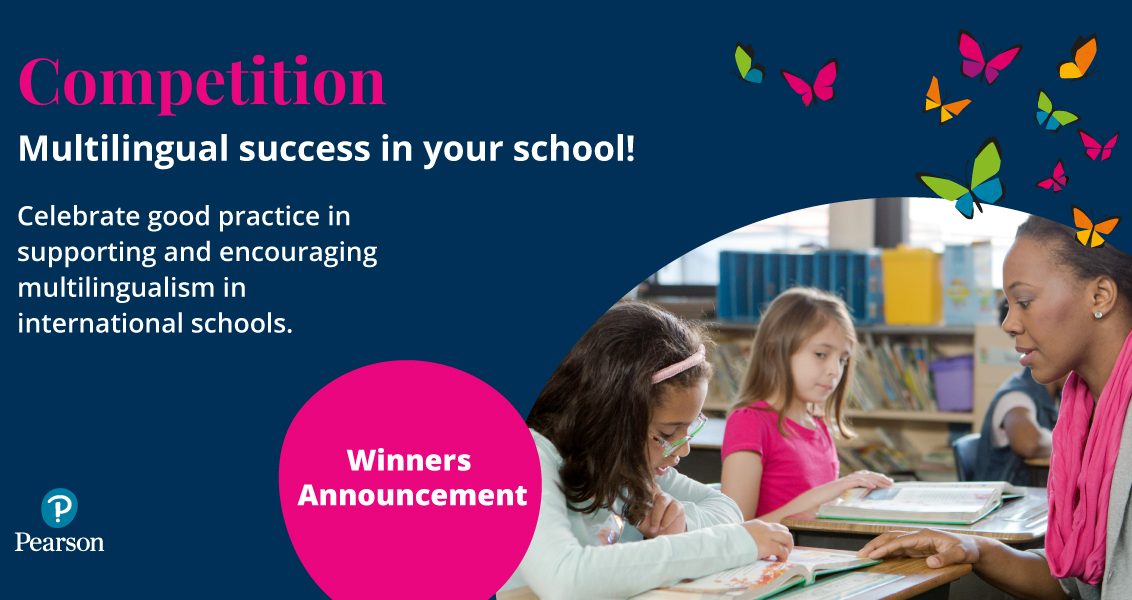
Having recently announced the winning schools in our Multilingual success in your school competition, we’re delighted to present the second in a series of blog posts, from our runners up and overall winner, in which we find out a bit more about their schools, their winning projects and the impact on their students.
Today the spotlight turns to our third place winner, Marymount International School in Rome. Their Unity through Diversity Unit for grades K-5 impressed our judges as a powerful way to increase young children’s awareness of languages and culture and to learn about internationalism and interculturalism.
Aimee Fenneman tells us more:
Congratulations Aimee, please tell us more about your school
Marymount International School Rome is a private, Catholic, co-educational day school set within a beautiful 40-acre campus close to Rome’s historic centre.
Our student body represents more than 60 nationalities and diverse religions and we seek to nurture students and their unique talents as a whole, beginning from Early Childhood (age 2) through to Grade 12. In addition to a stimulating and caring environment in which English is the language of instruction, Marymount offers students a values-based education modelled on an American curriculum with international standards and benchmarks. Throughout the school, we place an emphasis on respect, appreciation, tolerance and the promotion of a life-long love of learning.
We teach an American High School diploma and a longstanding International Baccalaureate program, which provides students with a competitive advantage for admission to colleges and universities in the United States, Europe, and around the world.
Tell us more about you and your role
In my role as the Director of Specialist Teaching and Learning my main responsibilities include working together with colleagues to develop our curriculum through unit planning, overseeing school-wide Learning Support, Enrichment and English Language Learning and developing weekly assemblies in line with the IB Approaches to learning and wellbeing.
My dedication to cultural identity, interlingual teaching and intercultural understanding run deep. This is something I strive to consider and implement in every aspect of my position. Our school vision is an inclusive one.
I am originally from the USA, however, I have lived in Rome and been at Marymount for 21 years. My first 15 years at Marymount were as an Elementary Learning Support Teacher. In this role I worked closely with the Elementary ELL teacher who mentored me in multilingualism, internationalism and intercultural understanding.
Our Unity through Diversity unit was originally created by her and was in place and evolving over many years. When she left the school, the unit was discontinued. With fresh eyes and a more positive vision to promote global citizenship, the unit has been updated and has been restored to the curriculum for the last two years.
Tell us more about multilingualism in your school
The internationalism of our school is directly linked to our goals and criteria. Our school has students from more than 60 nationalities with at least 24 different languages. Our staff is also diverse representing a number of different cultures, languages, and religions. As a religious school we welcome staff and students from other religions.
Marymount’s mission is heavily linked to multiculturalism and multilingualism. We believe that language is involved in all learning and is essential to educational progress. In addition, to learning how to use language students must also learn about language and through language.
Aligning with the IB Learner Profile and our own Marymount Learner Profile, which both require students to be open-minded communicators, we encourage our students to understand and appreciate their own linguistic and cultural identities and to be open
to the perspectives, values and traditions of others. We aspire to create a dynamic multilingual learning community in which the principal language of instruction is English, whilst at the same time promoting the development and maintenance of our students’ mother tongues. We also encourage the acquisition of other languages (Arabic, French, German, Greek, Italian, Latin, Mandarin, Spanish), and our students thrive within our linguistically and culturally rich environment.
Tell us more about your winning multilingual project
Our multicultural units have three main objectives: to create international awareness through a whole elementary school multicultural unit of learning, to value students’ cultural identity and mother-tongues, and to join with our school mission, “Unity through Diversity” to show understanding that as an international community we are united in our differences.
Each grade level chose a multicultural theme, however, the essential questions and concepts for each were the same. The guiding questions for all included What does the word international mean? What makes us an international school? What sorts of things make us different from each other? In what ways are we united? What is your cultural identity? What helps you understand this?
Each grade level then studied the following themes in a 4-6 week unit:
- Grade 5: Human Rights
- Grade 4 World Religions
- Grade 3 The Importance of Our Names
- Grade 2 Music and Games from Around the World
- Grade Kindergarten and 1 My Identity.
All grades agreed to have at least one dual language activity and at least one multilingual bulletin board. Teachers were encouraged to use interlingual teaching techniques. There was a culminating day at the end of the unit that began with a multilingual assembly led by the ELL students and teachers. The students then spent the rest of the day visiting each other’s classrooms to learn from one another.
What are your next steps for delivering multilingual success in your school?
We continue to develop our multicultural units in our Elementary School and Early Childhood Center. Last year our Language Policy was updated and we continue to implement that and build understanding across the school regarding our beliefs about language teaching and learning and cultural identity.
And finally, if you could offer one piece of advice to any teacher entering international education, what would it be?
A spirit of inclusion of all is essential. It is important that we model and support students in understanding their own cultural identities while learning about other students’ identities. In a world that continues to be more global every day, intercultural understanding is a critical element for peace and understanding. Those of us who have the privilege of working in an international school have the opportunity to promote this.
Thank you so much for your story Aimee!
Incase you missed anything, read more about the “Multilingual success in your school” competition:
Interview with Marta Ripolles: Multilingual success in your school competition runner up!
Winners Announcement: Multilingual success in your school competition!
Multilingual success in your school competition shortlist
Read more Multilingualism posts
Multilingual learners – webinar resources
Debunking the ‘immersion only’ myth
Is there a potential pandemic of language loss in international schools?
Input matters: supporting children’s harmonious bilingual development

